-
 Bitcoin
Bitcoin $108,017.2353
-0.81% -
 Ethereum
Ethereum $2,512.4118
-1.58% -
 Tether USDt
Tether USDt $1.0002
-0.03% -
 XRP
XRP $2.2174
-1.03% -
 BNB
BNB $654.8304
-0.79% -
 Solana
Solana $147.9384
-1.76% -
 USDC
USDC $1.0000
-0.01% -
 TRON
TRON $0.2841
-0.76% -
 Dogecoin
Dogecoin $0.1636
-2.09% -
 Cardano
Cardano $0.5726
-1.72% -
 Hyperliquid
Hyperliquid $39.1934
1.09% -
 Sui
Sui $2.9091
-0.59% -
 Bitcoin Cash
Bitcoin Cash $482.1305
0.00% -
 Chainlink
Chainlink $13.1729
-1.54% -
 UNUS SED LEO
UNUS SED LEO $9.0243
-0.18% -
 Avalanche
Avalanche $17.8018
-1.90% -
 Stellar
Stellar $0.2363
-1.69% -
 Toncoin
Toncoin $2.7388
-3.03% -
 Shiba Inu
Shiba Inu $0.0...01141
-1.71% -
 Litecoin
Litecoin $86.3646
-1.98% -
 Hedera
Hedera $0.1546
-0.80% -
 Monero
Monero $311.8554
-1.96% -
 Dai
Dai $1.0000
-0.01% -
 Polkadot
Polkadot $3.3473
-2.69% -
 Ethena USDe
Ethena USDe $1.0001
-0.01% -
 Bitget Token
Bitget Token $4.3982
-1.56% -
 Uniswap
Uniswap $6.9541
-5.35% -
 Aave
Aave $271.7716
0.96% -
 Pepe
Pepe $0.0...09662
-1.44% -
 Pi
Pi $0.4609
-4.93%
How does a mining pool distribute rewards?
Mining pools combine resources to boost block-mining success, offering varied reward systems like PPS, PROP, and PPLNS for fairer, more predictable payouts.
Jul 05, 2025 at 07:36 pm
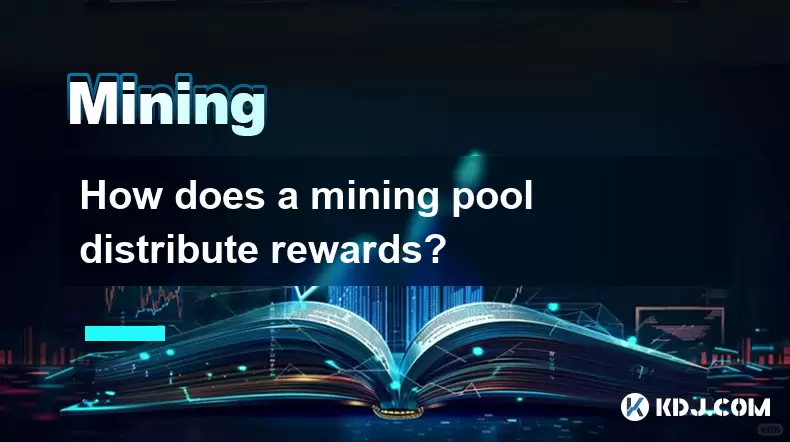
What Is a Mining Pool?
A mining pool is a collective group of cryptocurrency miners who combine their computational resources to increase the probability of successfully mining a block. By pooling resources, participants can achieve more consistent and predictable rewards compared to solo mining. Each mining pool operates under specific rules for distributing rewards among its members based on their contributed hash power. Understanding how these reward systems function is crucial for anyone participating in pooled mining activities.
Types of Reward Distribution Models
Mining pools use various methods to distribute rewards among participants. Some of the most common include:
- Pay-per-Share (PPS): Miners are paid immediately for each valid share they submit, regardless of whether the pool finds a block.
- Proportional (PROP): Rewards are distributed proportionally based on the number of shares each miner contributes during a round.
- Pay-per-Last-N-Shares (PPLNS): Payments are based on the last N shares submitted before a block is found, encouraging long-term commitment from miners.
- Score-Based Systems: Miners earn points over time, and rewards are calculated based on the score at the time a block is found.
Each model has different implications for payout frequency, variance, and fairness.
How Pay-per-Share (PPS) Works
In the Pay-per-Share (PPS) model, miners receive a fixed payment for every valid share they submit. This system offers immediate payouts and low variance since the pool operator bears the risk of block-finding luck. The reward per share is calculated based on the current difficulty, block reward, and transaction fees.
- Step 1: A miner connects to the pool and begins submitting shares.
- Step 2: Each valid share earns a predetermined amount of cryptocurrency.
- Step 3: Payouts are made automatically, usually on a daily basis or when a minimum threshold is reached.
- Step 4: The pool operator deducts a fee from the total block reward before distributing payments.
This method ensures that miners are compensated consistently, even if the pool experiences dry spells without finding blocks.
How Proportional (PROP) Distribution Functions
The Proportional (PROP) model distributes rewards after a block is found. Each miner’s contribution is measured by the number of shares they submitted during the round. Once the block is confirmed, the total reward is divided among miners according to their share of the total work.
- Step 1: Miners contribute shares during a round until a block is discovered.
- Step 2: The total number of valid shares in the round is tallied.
- Step 3: Each miner's percentage of the total shares determines their portion of the reward.
- Step 4: Transaction fees are typically included in the distribution, though some pools may allocate them separately.
Because payouts only occur when a block is found, this method introduces higher variance compared to PPS.
How Pay-per-Last-N-Shares (PPLNS) Operates
The Pay-per-Last-N-Shares (PPLNS) model focuses on the number of recent shares submitted before a block is found. Instead of considering all shares in a round, it looks back at a defined window of shares—often denoted as “N”—and pays miners based on their contributions within that window.
- Step 1: A block is found by the pool.
- Step 2: The system examines the last N shares submitted prior to the block discovery.
- Step 3: Each miner’s share count within this window is calculated.
- Step 4: Rewards are distributed proportionally based on those shares.
- Step 5: Fees and pool charges are deducted before final payouts.
This system discourages miners from switching pools frequently, as leaving early might cause them to miss out on rewards from later blocks.
Frequently Asked Questions (FAQ)
Q: Can I switch between reward models within the same mining pool?
Most mining pools allow users to select a preferred reward model when joining, but not all pools offer multiple options. If a pool supports several models, you may be able to switch between them, although frequent changes can affect your overall earnings consistency.
Q: Are there taxes involved in mining pool rewards?
Yes, depending on your jurisdiction, mining income—including pool rewards—may be subject to taxation. It is important to keep detailed records of your earnings and consult with a tax professional familiar with cryptocurrency regulations in your country.
Q: Why do some pools charge higher fees than others?
Pool fees vary based on operational costs, server infrastructure, and profit margins. Higher fees don’t necessarily indicate better service; it’s essential to evaluate factors like uptime, payout frequency, and user interface alongside fee structures.
Q: How often are rewards distributed?
Distribution frequency depends on the reward model and the pool’s policies. PPS often provides daily payouts, while PROP and PPLNS may distribute rewards once a block is found or at regular intervals such as weekly or bi-weekly. Always check the pool’s documentation for details.
Disclaimer:info@kdj.com
The information provided is not trading advice. kdj.com does not assume any responsibility for any investments made based on the information provided in this article. Cryptocurrencies are highly volatile and it is highly recommended that you invest with caution after thorough research!
If you believe that the content used on this website infringes your copyright, please contact us immediately (info@kdj.com) and we will delete it promptly.
- Cryptos in July 2025: Massive Gains or Just Hype?
- 2025-07-05 20:30:13
- Pepe's EVM Layer 2 Meme Coin Mania: What's the Hype?
- 2025-07-05 20:50:12
- Shiba Inu, Dogecoin, and the Crypto Skyrocket: What's Making These Memes Soar?
- 2025-07-05 21:10:12
- Tokenized Stocks: Robinhood, Gemini, and the NYSE Threat
- 2025-07-05 21:10:12
- Altcoin Adventures: Navigating the Pepe Fork Frenzy and Solana's Summer Swings
- 2025-07-05 21:15:12
- Hong Kong's Tokenised Bond Leap: Zero Stamp Duty Sparks Web3 Ambitions
- 2025-07-05 20:30:13
Related knowledge
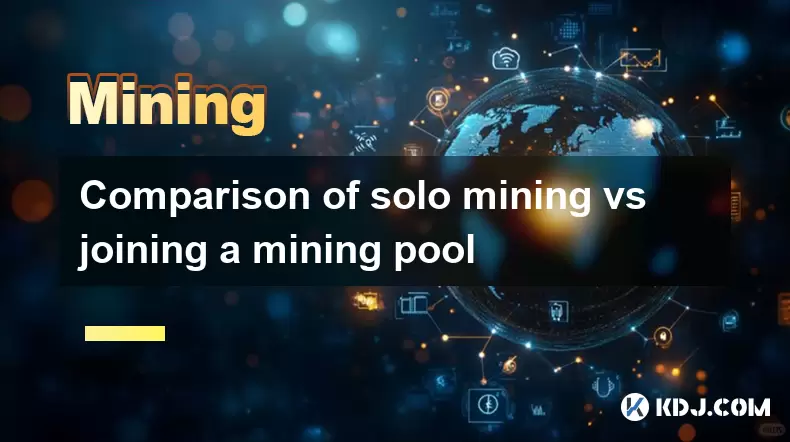
Comparison of solo mining vs joining a mining pool
Jul 05,2025 at 07:17pm
Understanding the Basics of Cryptocurrency MiningCryptocurrency mining involves validating transactions and adding them to a blockchain through computational power. Miners use specialized hardware, such as ASICs or GPUs, to solve complex cryptographic puzzles. Upon successfully solving these puzzles, miners are rewarded with newly minted coins. This pro...
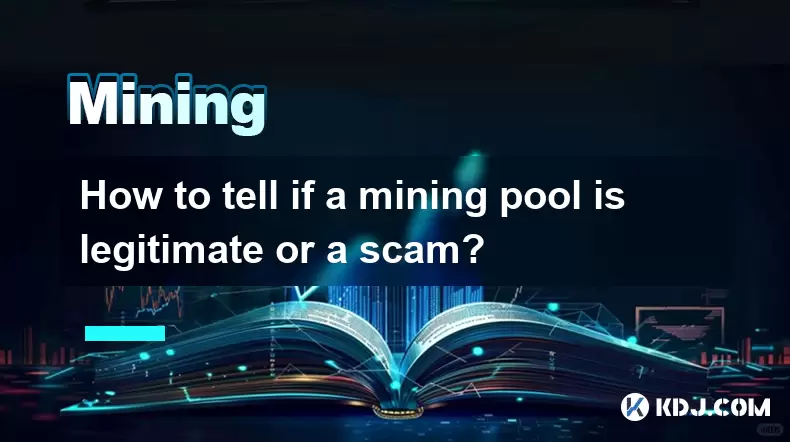
How to tell if a mining pool is legitimate or a scam?
Jul 03,2025 at 12:35pm
Understanding the Role of Mining PoolsMining pools play a crucial role in cryptocurrency mining by allowing individual miners to combine their computational resources and increase the likelihood of earning block rewards. A legitimate mining pool distributes rewards fairly, maintains transparency in operations, and has a strong community presence. Howeve...
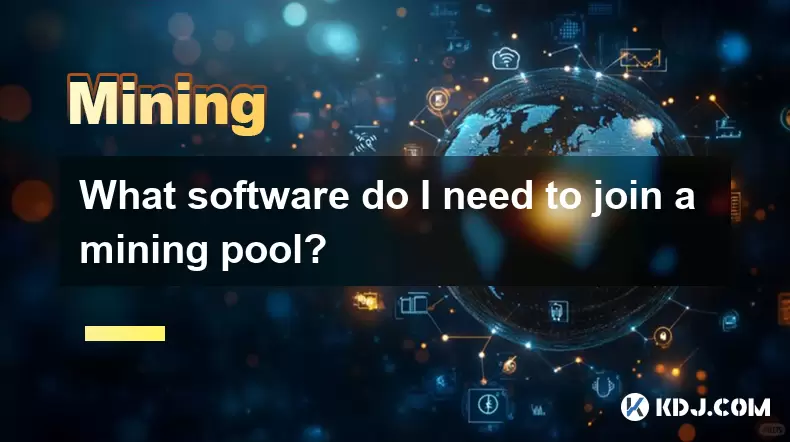
What software do I need to join a mining pool?
Jul 05,2025 at 07:32pm
Understanding Mining Pools and Their RequirementsJoining a mining pool is an essential step for many cryptocurrency miners who want to increase their chances of earning block rewards. Unlike solo mining, where you attempt to mine blocks alone, a mining pool allows multiple miners to combine their computational resources to solve blocks more consistently...
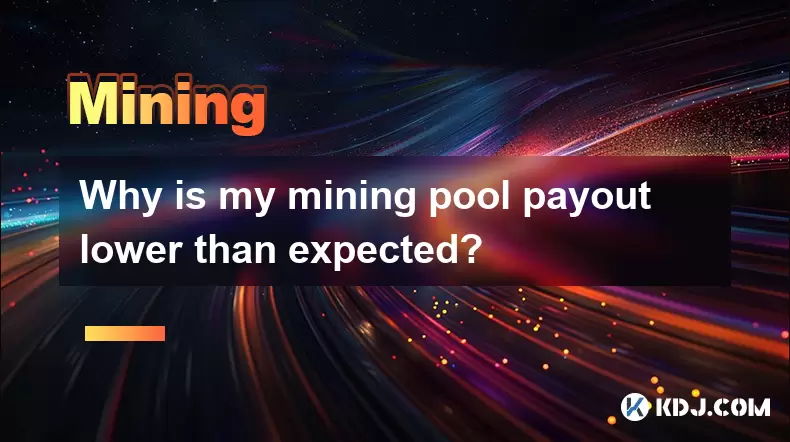
Why is my mining pool payout lower than expected?
Jul 03,2025 at 02:21am
Understanding Mining Pool Payout StructuresWhen you join a mining pool, it's important to understand the specific payout structure that the pool uses. Different pools operate under different reward systems, such as Pay Per Share (PPS), Proportional, Score-based, or Pay Per Last N Shares (PPLNS). Each method affects how and when miners receive their rewa...
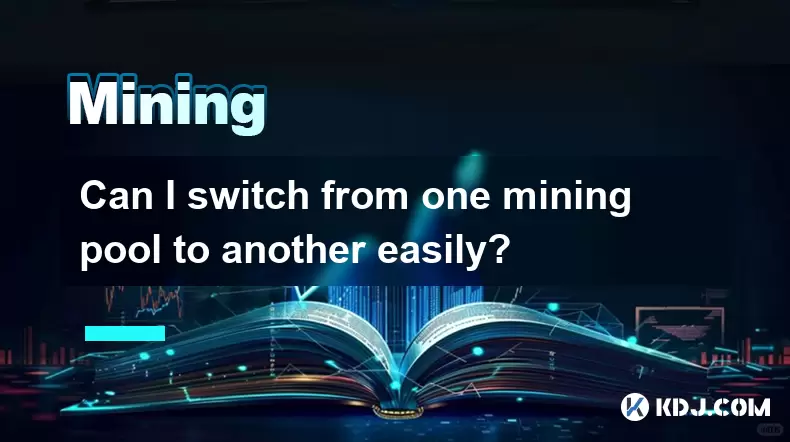
Can I switch from one mining pool to another easily?
Jul 05,2025 at 07:33pm
Understanding Mining Pools and Their Role in Cryptocurrency MiningIn the realm of cryptocurrency mining, mining pools play a crucial role in enabling individual miners to compete with large-scale operations. A mining pool is a group of miners who combine their computational resources to increase the chances of successfully mining a block. When a block i...

Is it safe to connect my hardware to a public mining pool?
Jul 05,2025 at 07:31pm
Understanding the Risks of Public Mining PoolsWhen considering whether it is safe to connect your hardware to a public mining pool, it’s essential to understand what a public mining pool entails. A public mining pool is a shared resource where multiple miners contribute their hashing power to increase the likelihood of solving a block and earning reward...

Comparison of solo mining vs joining a mining pool
Jul 05,2025 at 07:17pm
Understanding the Basics of Cryptocurrency MiningCryptocurrency mining involves validating transactions and adding them to a blockchain through computational power. Miners use specialized hardware, such as ASICs or GPUs, to solve complex cryptographic puzzles. Upon successfully solving these puzzles, miners are rewarded with newly minted coins. This pro...

How to tell if a mining pool is legitimate or a scam?
Jul 03,2025 at 12:35pm
Understanding the Role of Mining PoolsMining pools play a crucial role in cryptocurrency mining by allowing individual miners to combine their computational resources and increase the likelihood of earning block rewards. A legitimate mining pool distributes rewards fairly, maintains transparency in operations, and has a strong community presence. Howeve...

What software do I need to join a mining pool?
Jul 05,2025 at 07:32pm
Understanding Mining Pools and Their RequirementsJoining a mining pool is an essential step for many cryptocurrency miners who want to increase their chances of earning block rewards. Unlike solo mining, where you attempt to mine blocks alone, a mining pool allows multiple miners to combine their computational resources to solve blocks more consistently...

Why is my mining pool payout lower than expected?
Jul 03,2025 at 02:21am
Understanding Mining Pool Payout StructuresWhen you join a mining pool, it's important to understand the specific payout structure that the pool uses. Different pools operate under different reward systems, such as Pay Per Share (PPS), Proportional, Score-based, or Pay Per Last N Shares (PPLNS). Each method affects how and when miners receive their rewa...

Can I switch from one mining pool to another easily?
Jul 05,2025 at 07:33pm
Understanding Mining Pools and Their Role in Cryptocurrency MiningIn the realm of cryptocurrency mining, mining pools play a crucial role in enabling individual miners to compete with large-scale operations. A mining pool is a group of miners who combine their computational resources to increase the chances of successfully mining a block. When a block i...

Is it safe to connect my hardware to a public mining pool?
Jul 05,2025 at 07:31pm
Understanding the Risks of Public Mining PoolsWhen considering whether it is safe to connect your hardware to a public mining pool, it’s essential to understand what a public mining pool entails. A public mining pool is a shared resource where multiple miners contribute their hashing power to increase the likelihood of solving a block and earning reward...
See all articles

























































































